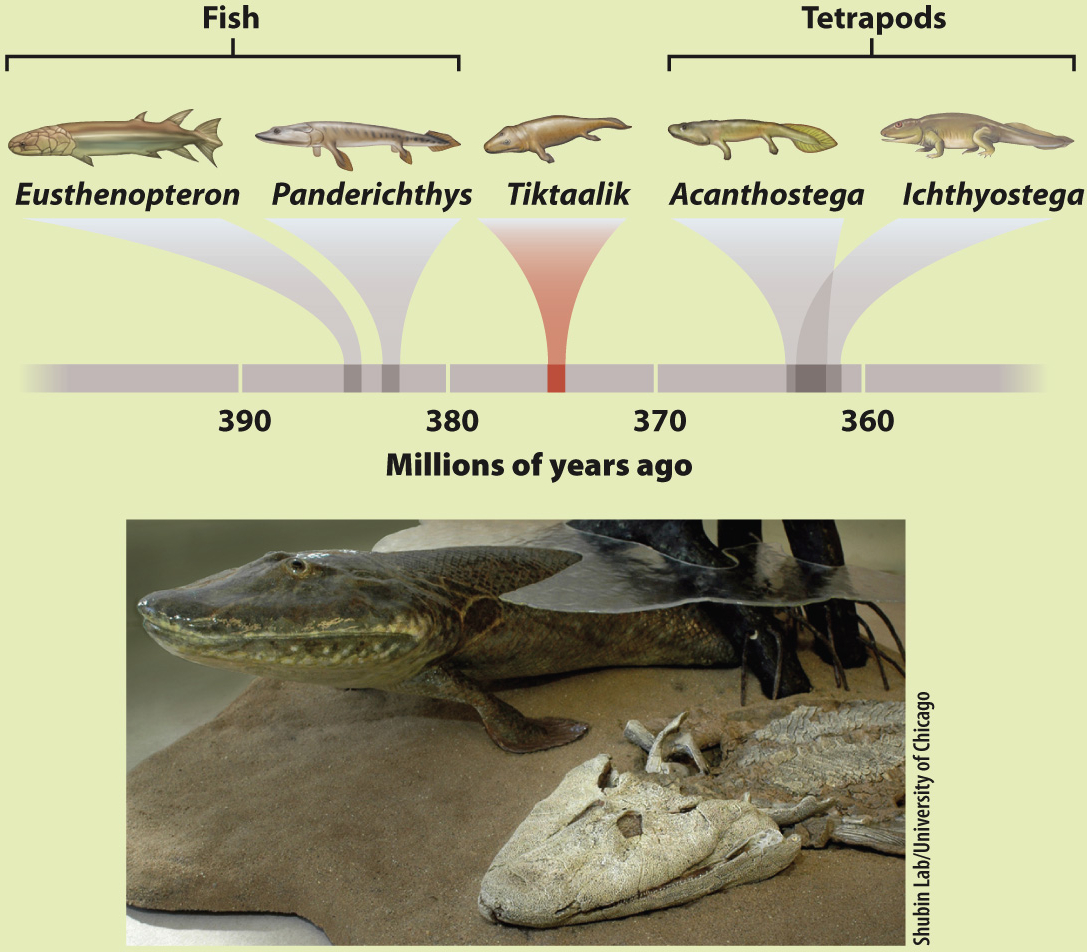HOW DO WE KNOW?
FIG. 23.20
Can fossils bridge the evolutionary gap between fish and tetrapod vertebrates?
BACKGROUND Phylogenies based on both morphological and molecular characters indicate that fish are the closest relatives of four-
HYPOTHESIS Land vertebrates evolved from fish by modifications of the skeleton and internal organs that made it possible for them to live on land.
OBSERVATION Fossil skeletons 390 to 360 million years old show a mix of features seen in living fish and amphibians. Older fossils have fins, fishlike heads, and gills, and younger fossils have weight-

CONCLUSION Fossils confirm the phylogenetic prediction that tetrapod vertebrates evolved from fish by the developmental modification of limbs, skulls, and other features.
FOLLOW-
SOURCE Daeschler, E. B., N. H. Shubin, and F. A. Jenkins, Jr. 2006. “A Devonian Tetrapod-